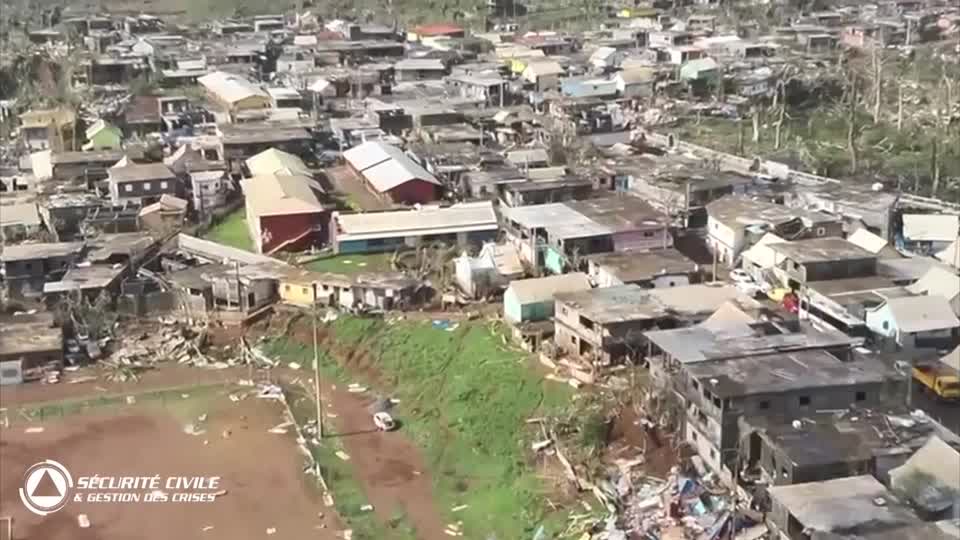Introduction
The French island of Mayotte has recently been struck by a devastating cyclone, leaving the community in a state of crisis. Early reports indicate significant loss of life and extensive damage to infrastructure, homes, and essential services. As rescue efforts unfold, the island faces not just immediate challenges, but also long-term implications for its recovery and resilience. This article delves into the details of the cyclone’s impact, explores the ongoing rescue efforts, and examines the broader issues surrounding disaster preparedness in vulnerable regions like Mayotte.
The Impact of the Cyclone
The cyclone, which made landfall with winds exceeding 150 kilometers per hour, has resulted in catastrophic conditions across Mayotte. Satellite images reveal widespread flooding and destruction, particularly in coastal areas where the storm surge inundated homes and businesses. The local government has reported that thousands are displaced, with many seeking refuge in temporary shelters.
Casualties and Displacement
The human toll of the cyclone is particularly heartbreaking. Initial reports suggest:
- At least 100 confirmed fatalities.
- Thousands more injured, with many requiring urgent medical attention.
- Over 20,000 individuals displaced from their homes.
Emergency services are overwhelmed, and the need for medical supplies and food is urgent. Local hospitals are operating beyond capacity, struggling to treat the influx of patients suffering from injuries sustained during the cyclone.
Infrastructure Damage
The cyclone has severely impacted Mayotte’s infrastructure:
- Roads and bridges have been destroyed, complicating rescue operations.
- Power outages are widespread, with many areas lacking electricity.
- Water supply systems have been compromised, leading to concerns about access to clean drinking water.
The destruction of essential services highlights the need for swift intervention from both local and international aid organizations. The French government has mobilized resources, deploying additional troops and equipment to assist with recovery efforts.
Ongoing Rescue Efforts
In the wake of the cyclone, rescue operations are a top priority. Teams from various organizations, including the French Red Cross and local volunteer groups, are working tirelessly to reach those in need. Efforts include:
- Search and rescue operations for individuals trapped under debris.
- Distribution of food, water, and medical supplies to affected populations.
- Establishing temporary shelters for the displaced.
Despite these efforts, challenges remain. The destruction of infrastructure has made some areas inaccessible, hindering rescue teams. Additionally, the psychological impact on survivors, many of whom have lost loved ones or their homes, cannot be overlooked. Mental health support is becoming an essential component of the response strategy.
The Role of Climate Change
The devastation wrought by the cyclone in Mayotte raises critical questions about the role of climate change in increasing the frequency and intensity of such natural disasters. As global temperatures rise, regions like Mayotte, which are already vulnerable, face heightened risks:
- Increased intensity of cyclones and hurricanes.
- Rising sea levels that exacerbate flooding during storms.
- Shifts in weather patterns leading to unpredictable rainfall and droughts.
Experts argue that addressing climate change is imperative for the long-term sustainability of islands like Mayotte. This includes investing in infrastructure that can withstand extreme weather, improving early warning systems, and enhancing community resilience to disaster.
Community and Global Response
The local community is at the forefront of recovery efforts, with residents banding together to support one another. This grassroots response is crucial in the immediate aftermath of the cyclone. However, international assistance will play a vital role in the island’s long-term recovery:
- Humanitarian aid from international organizations can provide essential supplies and support.
- Financial assistance from governments and NGOs will be necessary for rebuilding infrastructure.
- Technical expertise in disaster management can help improve future preparedness.
Countries around the world have expressed solidarity with Mayotte, offering condolences and support. Social media campaigns have emerged to raise awareness and funds for relief efforts, showcasing the power of global connectivity in times of crisis.
Conclusion
The cyclone that struck Mayotte has left an indelible mark on the island and its people. As the community begins the arduous task of recovery, the importance of preparedness and resilience in the face of climate change becomes ever more pronounced. The challenges ahead are significant, but through coordinated local and international efforts, Mayotte can rebuild and emerge stronger from this catastrophe.
In the coming weeks and months, the world will watch closely as Mayotte navigates the complexities of disaster recovery, community rebuilding, and climate resilience. Lessons learned from this tragedy could inform better practices for disaster preparedness in other vulnerable regions, emphasizing the need for global cooperation in the fight against climate change and its disastrous impacts.
See more Your Daily Weather



